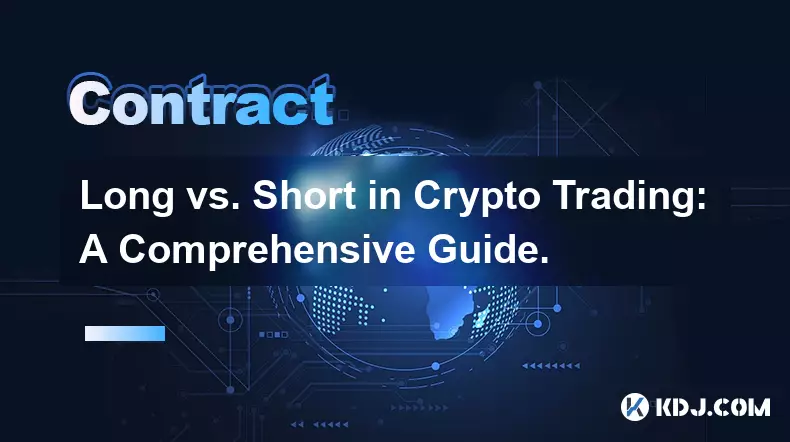-
 bitcoin
bitcoin $107015.826941 USD
-2.18% -
 ethereum
ethereum $3637.352324 USD
-5.18% -
 tether
tether $0.999831 USD
-0.02% -
 xrp
xrp $2.338078 USD
-6.23% -
 bnb
bnb $998.272150 USD
-6.97% -
 solana
solana $167.598257 USD
-10.12% -
 usd-coin
usd-coin $0.999863 USD
0.01% -
 tron
tron $0.282573 USD
-5.09% -
 dogecoin
dogecoin $0.169891 USD
-7.39% -
 cardano
cardano $0.557554 USD
-7.03% -
 hyperliquid
hyperliquid $39.914802 USD
-5.85% -
 chainlink
chainlink $15.414549 USD
-9.97% -
 bitcoin-cash
bitcoin-cash $510.361911 USD
-4.26% -
 ethena-usde
ethena-usde $0.999194 USD
-0.03% -
 stellar
stellar $0.282092 USD
-6.07%
What is an American-style option in crypto?
American-style crypto options allow holders to buy or sell assets like Bitcoin or Ethereum at any time before expiration, offering strategic flexibility in volatile markets.
Aug 13, 2025 at 11:35 am

Understanding American-Style Options in the Crypto Market
An American-style option in the cryptocurrency market refers to a financial derivative contract that grants the holder the right—but not the obligation—to buy or sell a specified cryptocurrency at a predetermined price, known as the strike price, at any time before or on the expiration date. This flexibility distinguishes American-style options from their European counterparts, which only allow exercise on the expiration date itself. In the context of crypto, where price volatility is exceptionally high, the ability to exercise early can be a strategic advantage.
The underlying asset in these options is typically a major cryptocurrency such as Bitcoin (BTC) or Ethereum (ETH), and they are traded on regulated crypto derivatives exchanges like Deribit, CME, or OKX. These platforms offer both call options (the right to buy) and put options (the right to sell), with American-style terms available on select products. The pricing of these options depends on variables such as the current spot price, strike price, time to expiration, implied volatility, and risk-free interest rates.
How American-Style Options Differ from European-Style Options
The key difference lies in the exercise timing. With American-style options, traders can act on favorable price movements immediately. For instance, if a sharp rally in Bitcoin occurs, a holder of an American-style call option can exercise the option early to purchase BTC at the lower strike price and potentially sell it at the higher market price. This immediate action is not possible with European-style options, which restrict exercise to the expiry date.
This early exercise feature makes American-style options more valuable in volatile markets. The premium (price) of an American option is generally higher than that of a European option with identical terms, reflecting the added flexibility. In crypto, where 24/7 trading and news-driven price swings are common, this feature is particularly relevant. Traders anticipating a major event—such as a regulatory announcement or a network upgrade—may prefer American-style options to lock in profits or hedge positions promptly.
Exercising an American-Style Crypto Option: Step-by-Step Process
To exercise an American-style crypto option, users must follow a specific procedure on their chosen exchange. Below is a detailed walkthrough:
- Log in to your account on a derivatives exchange that supports American-style options, such as Deribit.
- Navigate to the 'Positions' or 'Options' tab to view your open contracts.
- Locate the specific option contract you wish to exercise—ensure it is in-the-money (i.e., the spot price is above the strike for calls or below for puts).
- Click on the 'Exercise' button associated with that position.
- Confirm the number of contracts to exercise and submit the request.
- The system will automatically settle the difference or deliver the underlying asset, depending on the settlement type (cash or physical).
- Funds or crypto will appear in your wallet or margin account shortly after processing.
It is crucial to note that not all options on crypto exchanges are American-style. Users must verify the contract specifications before trading. Exercising early may not always be optimal, as it forfeits any remaining time value. However, in cases where dividends (in traditional markets) or large funding rate advantages (in crypto) exist, early exercise can be beneficial.
Risks and Considerations When Using American-Style Options
While American-style options offer flexibility, they come with strategic complexities. One major consideration is time decay, represented by theta in options pricing models. As expiration approaches, the time value of the option erodes, which can reduce profitability even if the underlying asset moves favorably. Additionally, implied volatility plays a significant role—high volatility increases option premiums, making them more expensive to buy but more valuable to hold.
Another risk is liquidity. Some crypto options, especially those with non-standard strikes or longer maturities, may have low trading volume. This can make it difficult to close a position before exercising, potentially forcing suboptimal decisions. Furthermore, early exercise may trigger immediate tax implications in certain jurisdictions, especially if the settlement results in a crypto transfer.
Traders must also be aware of margin requirements. Holding short positions in American-style options exposes sellers (writers) to early assignment risk—the buyer may exercise at any time, requiring the seller to fulfill the obligation immediately. This demands sufficient collateral and active risk management.
Use Cases for American-Style Options in Crypto Trading
American-style options are particularly useful in several crypto-specific scenarios. For example, during a hard fork or airdrop event, holders of call options may exercise early to gain ownership of the underlying asset and qualify for the new tokens. Similarly, in anticipation of futures funding rate spikes, traders might exercise puts to go short on spot markets and capture funding differentials.
Institutional investors use these options for dynamic hedging. If a fund holds a large BTC position and expects short-term downside risk, buying American-style puts allows them to hedge at any moment without waiting for expiry. This real-time protection is vital in a market that never sleeps.
Retail traders can use American-style options to capture short-term momentum. A trader who believes ETH will surge due to an upcoming upgrade can buy a call and exercise it as soon as the price surpasses the strike, locking in gains before potential pullbacks.
Where to Trade American-Style Crypto Options
Several platforms offer American-style options, each with distinct features:
- Deribit: The largest crypto options exchange, offering American-style BTC and ETH options with both cash and physical settlement options.
- CME Group: Provides regulated Bitcoin options with American exercise style, appealing to institutional traders.
- OKX: Supports American-style options on multiple cryptocurrencies, with user-friendly interfaces and advanced order types.
- Bybit: Offers options with flexible exercise terms, though users must check individual contract details.
When selecting a platform, verify the settlement method, fee structure, and available strikes and expiries. Also, ensure the exchange provides clear documentation on exercise procedures and timing cutoffs.
Frequently Asked Questions
Can I trade American-style options with leverage?Yes, most crypto derivatives exchanges allow leveraged trading of American-style options. However, leverage applies primarily to the margin required to hold or write options, not directly to the option premium. Traders must maintain sufficient margin to cover potential early assignment.
What happens if I don’t exercise my American-style option?If the option is in-the-money at expiration, most exchanges will automatically exercise it on your behalf. If it’s out-of-the-money, it expires worthless, and no action is taken.
Are American-style options more expensive than European-style ones?Generally, yes. The premium is higher due to the added benefit of early exercise. The difference in price reflects the embedded flexibility and is influenced by volatility and time to expiry.
Can I sell my American-style option instead of exercising it?Absolutely. Most traders close their positions by selling the option on the open market rather than exercising it. This allows them to capture both intrinsic and time value, whereas exercising only realizes intrinsic value.
Disclaimer:info@kdj.com
The information provided is not trading advice. kdj.com does not assume any responsibility for any investments made based on the information provided in this article. Cryptocurrencies are highly volatile and it is highly recommended that you invest with caution after thorough research!
If you believe that the content used on this website infringes your copyright, please contact us immediately (info@kdj.com) and we will delete it promptly.
- Backend-for-Frontend, Token Theft, and Security: Navigating the Treacherous Waters of Modern Web Apps
- 2025-11-05 05:10:01
- Crypto Carnage: Bitcoin's $200B Wipeout – What's Next?
- 2025-11-05 04:30:16
- Sequans, Bitcoin, and Debt Reduction: A NYC Perspective on a Bold Move
- 2025-11-05 03:50:12
- XRP Price Wobbles: Death Cross Looms as Ripple Token Navigates Choppy Waters
- 2025-11-05 04:10:01
- Altcoins, Perpetual Tokens, and ETH Price: Navigating the Crypto Current
- 2025-11-05 03:55:01
- Tether's Triumph: $10 Billion Profits and a Treasury Milestone
- 2025-11-05 03:55:12
Related knowledge

Long vs. Short in Crypto Trading: A Comprehensive Guide.
Nov 04,2025 at 07:39pm
Understanding Long and Short Positions in Cryptocurrency Markets1. In crypto trading, taking a long position means buying a cryptocurrency with the ex...

The 2025 Guide to Profitable Crypto Futures and Derivatives Trading.
Nov 01,2025 at 07:39pm
Understanding Crypto Futures and Derivatives in 20251. Crypto futures are financial contracts obligating the buyer to purchase, or the seller to sell,...

Navigating a Bear Market: Shorting Strategies for Crypto Futures.
Nov 03,2025 at 07:18pm
Understanding Bear Market Dynamics in Crypto1. A bear market in the cryptocurrency space is characterized by prolonged price declines, often driven by...

What is Open Interest? A Key Metric for Futures Traders.
Nov 03,2025 at 11:18pm
Understanding Open Interest in Cryptocurrency Futures1. Open interest refers to the total number of active futures contracts that have not been settle...

How to Trade Crypto Futures on Bybit: A Complete Walkthrough.
Nov 04,2025 at 10:50pm
Setting Up Your Bybit Account for Futures Trading1. Visit the official Bybit website and click on the 'Sign Up' button to create a new account. Provid...

Identifying Support and Resistance Levels for Crypto Contract Trading.
Nov 04,2025 at 06:15pm
Understanding Support and Resistance in Crypto Markets1. Support and resistance levels are foundational concepts in technical analysis, especially wit...

Long vs. Short in Crypto Trading: A Comprehensive Guide.
Nov 04,2025 at 07:39pm
Understanding Long and Short Positions in Cryptocurrency Markets1. In crypto trading, taking a long position means buying a cryptocurrency with the ex...

The 2025 Guide to Profitable Crypto Futures and Derivatives Trading.
Nov 01,2025 at 07:39pm
Understanding Crypto Futures and Derivatives in 20251. Crypto futures are financial contracts obligating the buyer to purchase, or the seller to sell,...

Navigating a Bear Market: Shorting Strategies for Crypto Futures.
Nov 03,2025 at 07:18pm
Understanding Bear Market Dynamics in Crypto1. A bear market in the cryptocurrency space is characterized by prolonged price declines, often driven by...

What is Open Interest? A Key Metric for Futures Traders.
Nov 03,2025 at 11:18pm
Understanding Open Interest in Cryptocurrency Futures1. Open interest refers to the total number of active futures contracts that have not been settle...

How to Trade Crypto Futures on Bybit: A Complete Walkthrough.
Nov 04,2025 at 10:50pm
Setting Up Your Bybit Account for Futures Trading1. Visit the official Bybit website and click on the 'Sign Up' button to create a new account. Provid...

Identifying Support and Resistance Levels for Crypto Contract Trading.
Nov 04,2025 at 06:15pm
Understanding Support and Resistance in Crypto Markets1. Support and resistance levels are foundational concepts in technical analysis, especially wit...
See all articles










































































